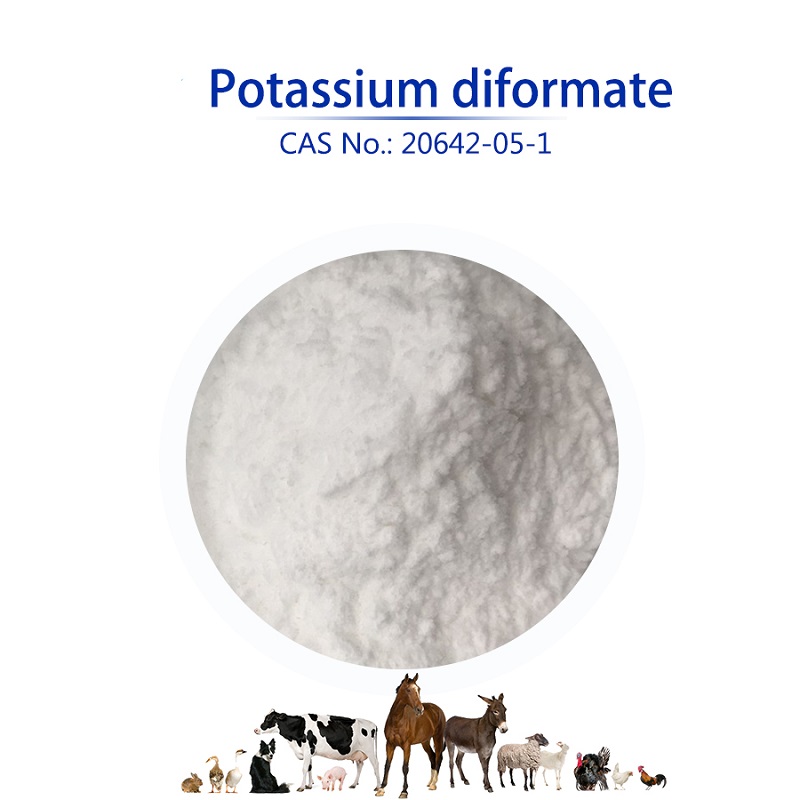Potassium diformate is an organic acid salt mainly used as a feed additive and preservative, with antibacterial, growth promoting, and intestinal acidification effects.
It is widely used in animal husbandry and aquaculture to improve animal health and enhance production performance.
1. Inhibit the growth of harmful bacteria:
Potassium diformate can significantly inhibit pathogenic bacteria such as Escherichia coli and Salmonella by releasing formic acid and formate salts, disrupting bacterial cell membranes and reducing the risk of intestinal infections in animals.
2. Promote nutrient absorption:
Acid the intestinal environment, activate digestive enzyme activity, improve the utilization rate of nutrients such as protein and minerals in feed, and accelerate animal growth rate.
3. Enhance immunity:
By regulating the balance of gut microbiota, reducing toxin accumulation, indirectly enhancing animal immune system function, and reducing disease incidence.
4. Antioxidant effect:
The formic acid component can slow down feed oxidation, extend shelf life, and protect animal cells from free radical damage.
Application:
Feed additives: added to animal feed such as pigs, chickens, and cows to improve feed conversion rate and reduce intestinal problems such as diarrhea.
Aquaculture: Improve water quality, inhibit the proliferation of harmful microorganisms in water, and promote the healthy growth of fish and shrimp.
Feed preservation: used as a food acidifier or preservative for the preservation of some processed feeds.
Applicable object:For animal use only, not directly used for human food or medicine.
Dosage control:Excessive addition may lead to excessive acidification of animal intestines, and should be added according to the recommended dosage (usually 0.6% -1.2% of feed).
Storage conditions:Sealed and stored in a cool and dry place, avoiding contact with alkaline substances.
The mechanism of action of potassium diformate is clear and its safety is high, but the actual use needs to be adjusted according to the animal species, growth stage, and feeding environment. When it comes to feed ratio or disease prevention and control, it is recommended to consult professional veterinarians or agricultural technicians.
Post time: Apr-29-2025






